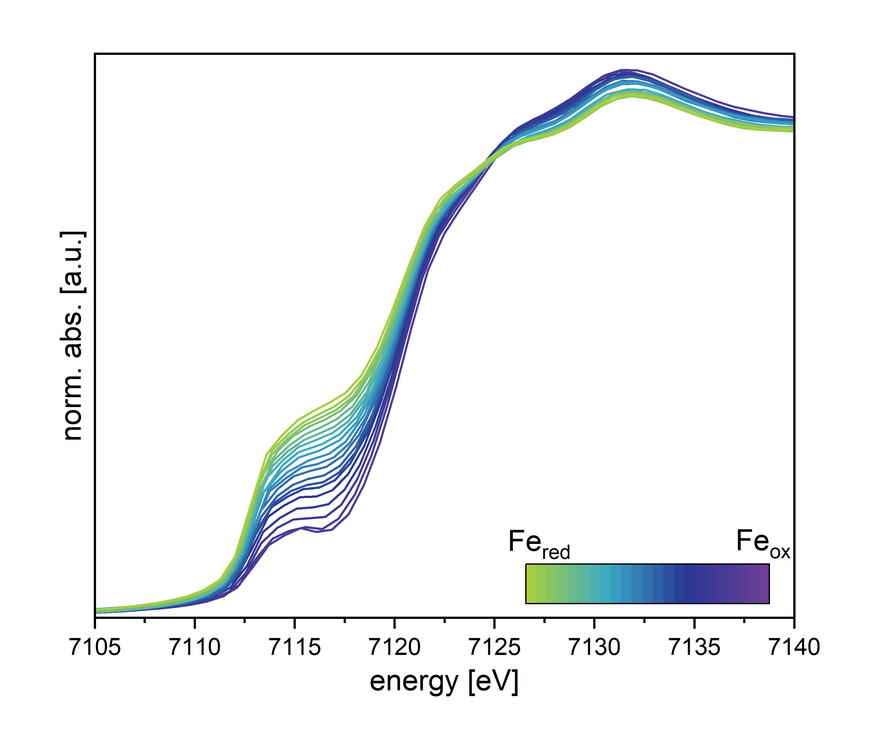Unusually versatile and with depth: X-ray spectroscopy

© Paderborn University, Roland Schoch
The Bauer group is intensively involved in the application and further development of X-ray spectroscopic methods: X-ray absorption (XAS) and X-ray emission (XES).
By using hard X-rays at synchrotrons and free electron lasers in Germany and abroad (e.g. DESY, XFEL, Diamond, ESRF, SACLA), it is possible to investigate novel materials and compounds not only ex-situ but also in-situ or under operando conditions. The equipment is not limited to solids, so that samples in solution or suspensions can also be analysed under catalytic conditions (reaction gases/inert conditions, additional photophysical excitation, temperature-dependent measurements, reactions under overpressure, etc.).

© Paderborn University, Roland Schoch
By using XAS, HERFD-XANES (High energy resolution fluorescence detected X-ray absorption near edge structure), CtC-XES (core-to-core X-ray emission spectroscopy) and VtC-XES (valence-to-core XES), all relevant geometrical (bond lengths and coordination numbers) and electronic (spin multiplicity, HOMO and LUMO states) information can be obtained, which is necessary for a mechanistic understanding of the functioning of metal complexes and catalysts.Spectra interpretation is performed using classical evaluation programs as well as (TD-)DFT calculations. In addition to numerous exciting collaborations, we focus on the application of these methods to photoactive compounds, novel energy storage materials and noble metal-free catalyst alternatives for industrial applications.

© Paderborn University, Steffen Schlicher
In order to apply the new photon-in/photon-out spectroscopy methods such as HERFD-XANES, core-to-core XES (CtC-XES) and valence-to-core XES (VtC-XES) to our sustainable chemistry systems, technical developments are necessary. These concern both the core of the experiment - the spectrometer - and the sample environment - the measuring cells. In particular, the construction of new spectrometer types with different time resolutions at PETRA III is a core task of the group.
